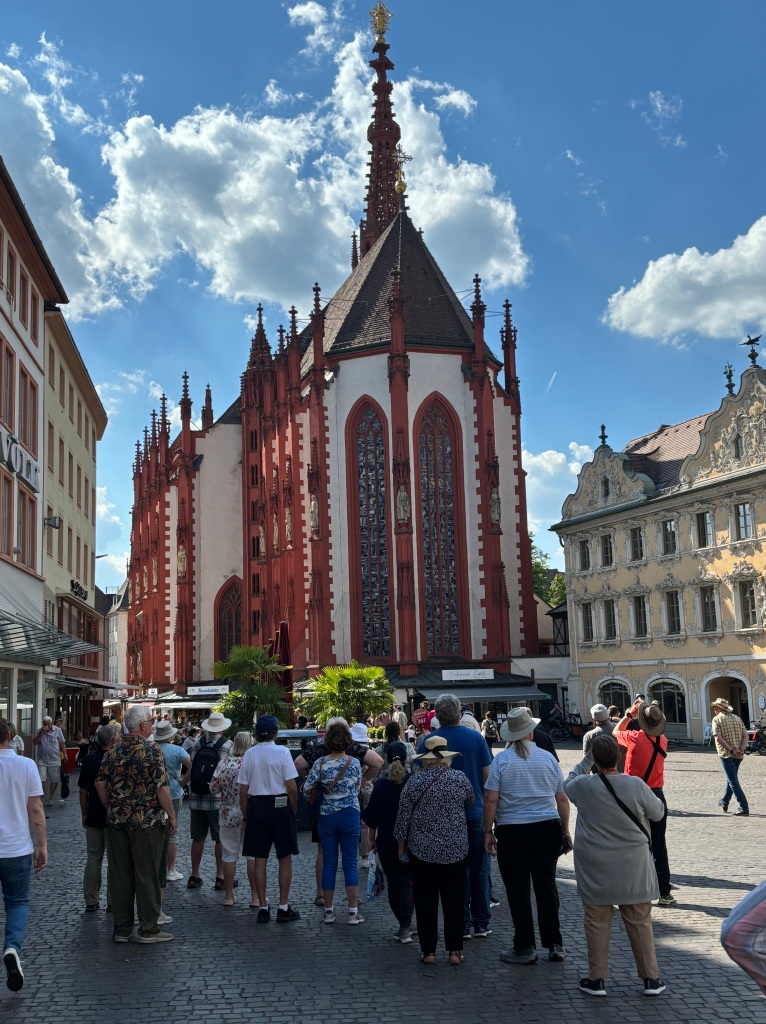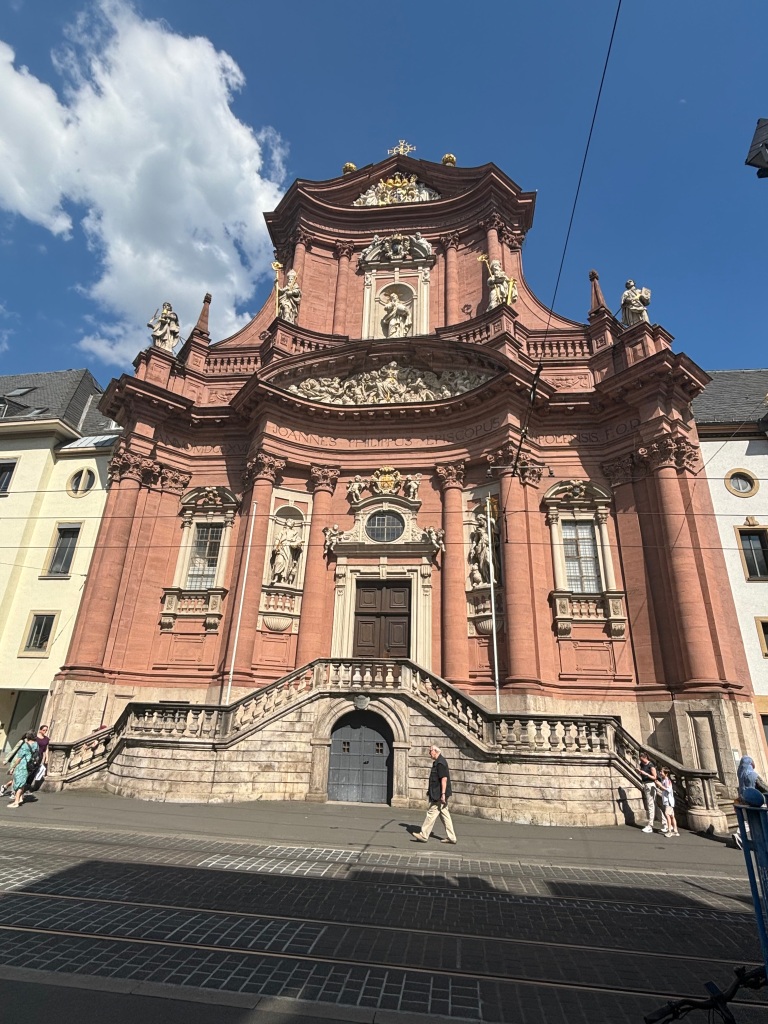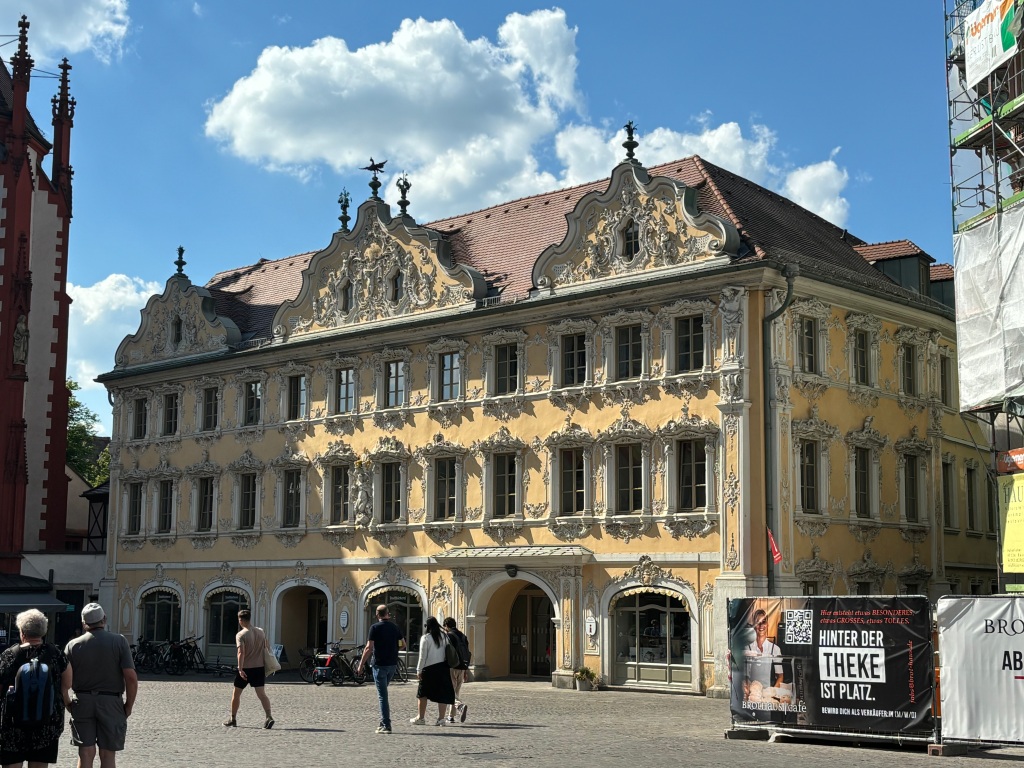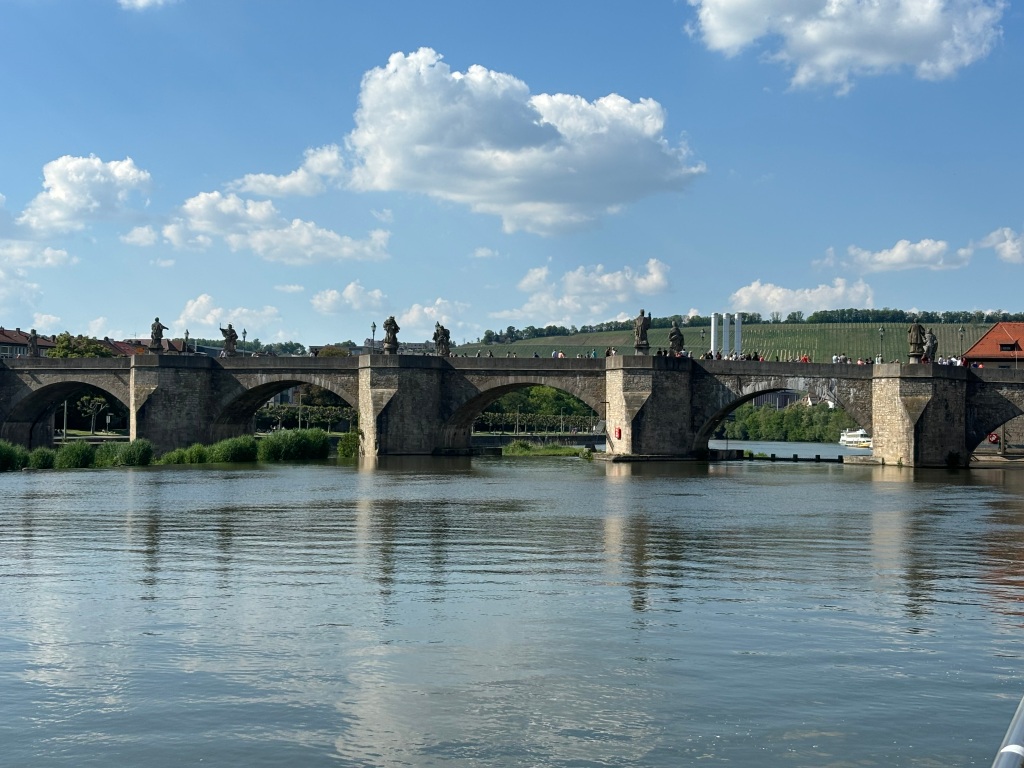May 13, 2024
After our time at the Residence, we turned our attention to the town of Würzburg. There are more than 100 cathedrals throughout Germany, and Würzburg is home to the fourth most important one.
The Würzburg Cathedral is a Roman Catholic church dedicated to St. Kilian, an Irish monk sent to the Franconian region of Germany in 686 AD to plant a Catholic church.

Kilian elected to make Würzburg, pagan country at the time, his headquarters. He knew if he could convert the duke the rest of the country would follow. Kilian succeeded in converting the duke, but he was not able to sway the duke’s wife. The bigger issue was that the duke had married his brother’s widow. From a spiritual perspective this was viewed to be the same as marrying your sister, a very big no-no. Kilian told the duke he would have to divorce his wife. The duke agreed to do so, but first he had a battle to fight. He would divorce her as soon as he got back. The wife got wind of the plan and was none too happy. She arranged for a soldier to kill Kilian while the duke was away. In 1689, while Kilian and two of his associates were preaching in the town square the soldier attacked and cut off their heads. We don’t know if the duke went ahead with the divorce or not, but 50 years later their remains were found. Suddenly many illnesses began to be cured. The townspeople credited Kilian and the two men with the miracles, Kilian was made a saint, and to honor him a church was built on the spot where their remains were found.
The skulls of the three men were excavated and inlaid with precious stones. Now every year on July 8 the three skulls are removed from the glass crypt in which they are kept and paraded through the streets before being put on display in Würzburg Cathedral.
When the Cathedral was damaged in the March 16, 1945 bombing, services were moved to the Neumunster Church across the way.


The Neumunster Church is a chapel, not a cathedral, and until the 14th century it was the site of a Jewish synagogue. Unfortunately, when the bubonic plague happened everything was burned in an effort to rid the town of the disease. This included the synagogue. The chapel was built in its place. In the center bottom, under the stairs leading to the front door, is where the glass crypt with the remains of Kilian and his friends are kept. At the very top of the church is a gold Madonna that turns in the wind, assuring that the blessing of the Virgin Mother is given to every corner of Würzburg.
What two things is Germany known for? Churches and beer! So, of course we went from learning about the most important churches to the most important beerhouse!
Falken Haus is an 18th century tavern owned by a very resourceful (and rich, from the looks of it – the beerhouse encompasses the entire building!) widow. The Royal Prince Bishop of the time was very into Baroque architecture and wanted every building in his region to adopt the style. He issued an edict that if your home reflected the Baroque style, you would be exempt from property taxes for 10 years. The very smart widow had the entire front façade of her tavern redone in Baroque! Today this building houses the Office of Tourism and the municipal library.

Next up was the Town Hall. Every Town Hall has its own restaurant, or Ratskeller, located on the bottom floor. This particular Town Hall has never been anything but, and it’s been in operation since the 11th century. The restaurant is always open to the public.

The tree you see painted on the front of the building is the Judgement Tree. It pays homage to an actual tree that used to stand in front of the Town Hall. Once a week a judge would sit under the tree while the townspeople came and pled their cases to him. After listening to their arguments he would issue his judgement; thus, the tree became known as the Judgement Tree. When the tree had to be cut down a tree was painted on the building in remembrance of it.
Our final stop was the Alte Main Brücke, or Old Main Bridge. Originally built in 1473, the bridge spans the Main River, connecting what is now modern day Würzburg to its historic center. There are bakeries and eateries on either side of the bridge and a wine house actually on the bridge. A favorite past-time of locals is to grab a glass of wine or beer and a snack with friends and enjoy it while looking out over the Main and taking in the sites of the city. We took this picture as we were walking back to our boat, so it’s a bit far away, but you can still see all the people milling about.

